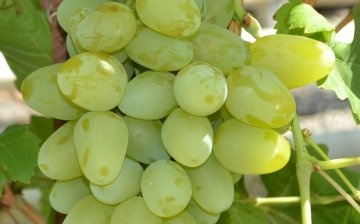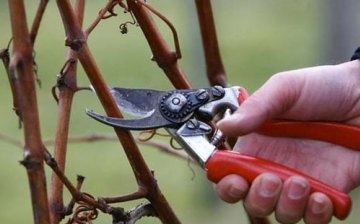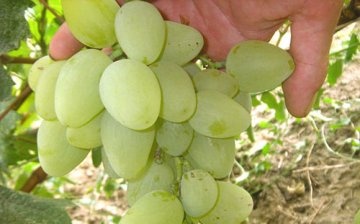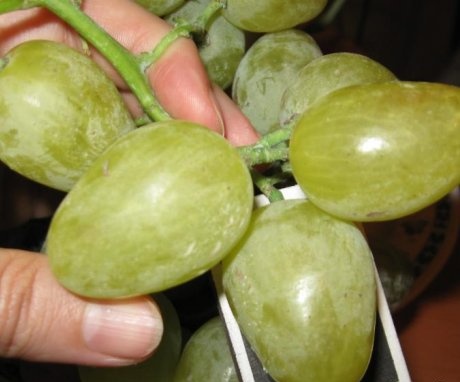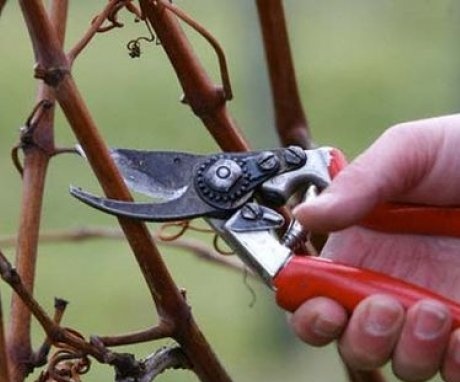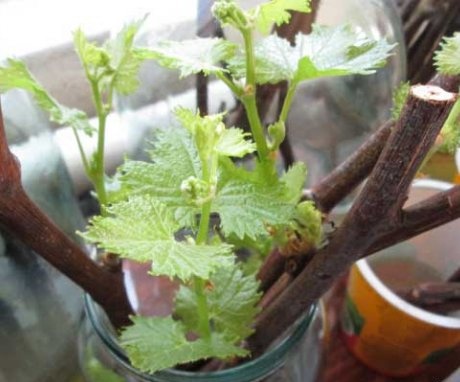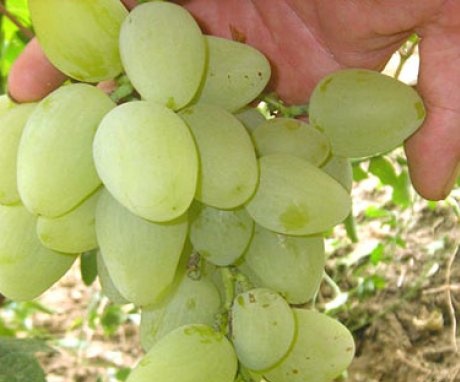Monarch grape variety - general requirements for cultivation
Grapes Is a perennial deciduous shrub that belongs to the grape family. The grape has a strong root system, thanks to which it feeds and grows well in arid regions. Large maple leaves are not densely located on young green branches on long petioles. The vine stretches several meters in length. At a young age, it is painted in a light green or reddish-green tone, depending on the variety, with age, the branches grow stiff.
The grapes bloom in clustered inflorescences, which, after pollination, form loose or knocked down clusters of grape berries. Fruits have sweet or sour-sweet pulp, thin skin. Their color can be from greenish-white and pink, to dark blue and black, depending on the variety.
Content:
- General information about the Monarch grape variety
- Monarch grape care
- Monarch grape propagation
- The use of Monarch grapes
General information about the Monarch grape variety
Monarch grape variety belongs to canteens... It ripens early, the period of fruit pouring lasts 4.5-5 months. The bush is vigorous, with long, strong vines. The flowers are bisexual, therefore pollinated well. The berries ripen large, have an oval shape and taper slightly towards the bottom. They are painted in a yellowish-green tone with a pink spot. The pulp is dense, juicy, has a sweetish-nutmeg taste. The skin is dense and thin, easily eaten.
The bunches are formed large, their weight can be from 500 grams to 1 kg, depending on the place and growing conditions of the bush.
Fruits, in ripe form, can be on the vine for a long time, while not losing their taste and marketability. Well transported. The variety is hybrid, bred for cultivation in regions with cold winters, therefore it tolerates frost down to -22 degrees.
Monarch grape care
Caring for Monarch grapes is the same as for the rest of the bushes grapes... Timely feeding and fertilization, watering and autumn pruning:
- After the grapes are opened after wintering in cold regions, the soil is allowed to dry out a little. The soil is loosened and a good portion is brought under the bush mineral and organic fertilizers along with irrigation. The interval between dressings should be 2-3 weeks.
- Loosening of the soil is carried out periodically during the spring and summer months, especially after watering.
- When the berries have formed and the ripening period begins, watering removed. The root system of the bush goes deep into the ground, where it feeds on moisture and minerals. If the bush receives a lot of water, the berries will begin to burst.
- Every year in the fall, the grape bushes must be pruned. All unnecessary branches are removed, diseased vines are removed. Only a few good branches should be left, which will give strong growth to the young shoots next year.
- In cold regions, it is recommended to insulate bushes for wintering. Despite the fact that the Monarch grape variety is bred frost-resistant, low temperatures over - 23 degrees can destroy the kidneys and the year will be poor. Therefore, the branches are bent to the ground, covered with thick paper and a little sprinkled with earth.This process is carried out before severe frosts, and I open the grapes in early spring so that the vine does not have time to deteriorate.
Monarch grape propagation
Propagation of grapes can be carried out using cuttings and layering. Cuttings are harvested during the autumn pruning of the bush. To do this, choose a well-ripened, strong and healthy vine. Branches are cut, on which there should be 3-4 healthy buds. The finished material is placed in a damp cloth, wrapped in a bag and placed in a dark, cool place. A basement or vegetable section of a refrigerator works well.
The fabric should be checked periodically, it should be constantly damp. In February cuttings take out and soak for 12-20 hours, depending on their condition. Each branch must be checked for suitability by cutting off 0.5 cm on one side. The slice should be green. If brown spots are visible on it or it is completely darkened, such a cutting will not give good roots.
After checking, the branches can be treated with a potassium permanganate solution and placed in a stimulating solution for several hours.
They are placed in the part where the roots will form. After the required period of time has elapsed, the same part is wrapped with a damp cloth and each stalk is placed in polyethylene separately. Next, the cuttings are laid out on the windowsill with the roots towards the battery, and the tops towards the glass. The moisture content of the fabric is checked regularly. After a while, the upper buds will begin to swell and leaves will appear from them. This is an indicator that the cuttings have taken root. After a week, they can be planted in separate containers with a loose fertile substrate for further development and strengthening of the root system.
Reproduction of grapes using layering:
- When propagating by layering, a strong, ripe long vine is selected and dropped at a short distance from the mother bush into a pre-prepared recess.
- The branch must be well secured. It is watered along with the rest of the grape bushes.
- The next year, the vine should take root and the young bush can be separated from the mother bush.
- After 2 years, a separate independent bush is formed, which can bear fruit.
- It is recommended to remove most of the ovaries to strengthen the root system.
Monarch grape variety is a hybrid plant, it is bred resistant to most common diseases... However, it is recommended to treat the bushes with special drugs.
The use of Monarch grapes
In white varieties grapes there are many useful vitamins and minerals that have a beneficial effect on the human body. Metabolism and digestion are improved. White grapes contain antioxidants that prevent the appearance of wrinkles, strengthen the heart muscle and prevent cancer.
Monarch grape variety is used in the production of muscat wines. Jams, juices and vinegar are also made from it.
More information can be found in the video.



